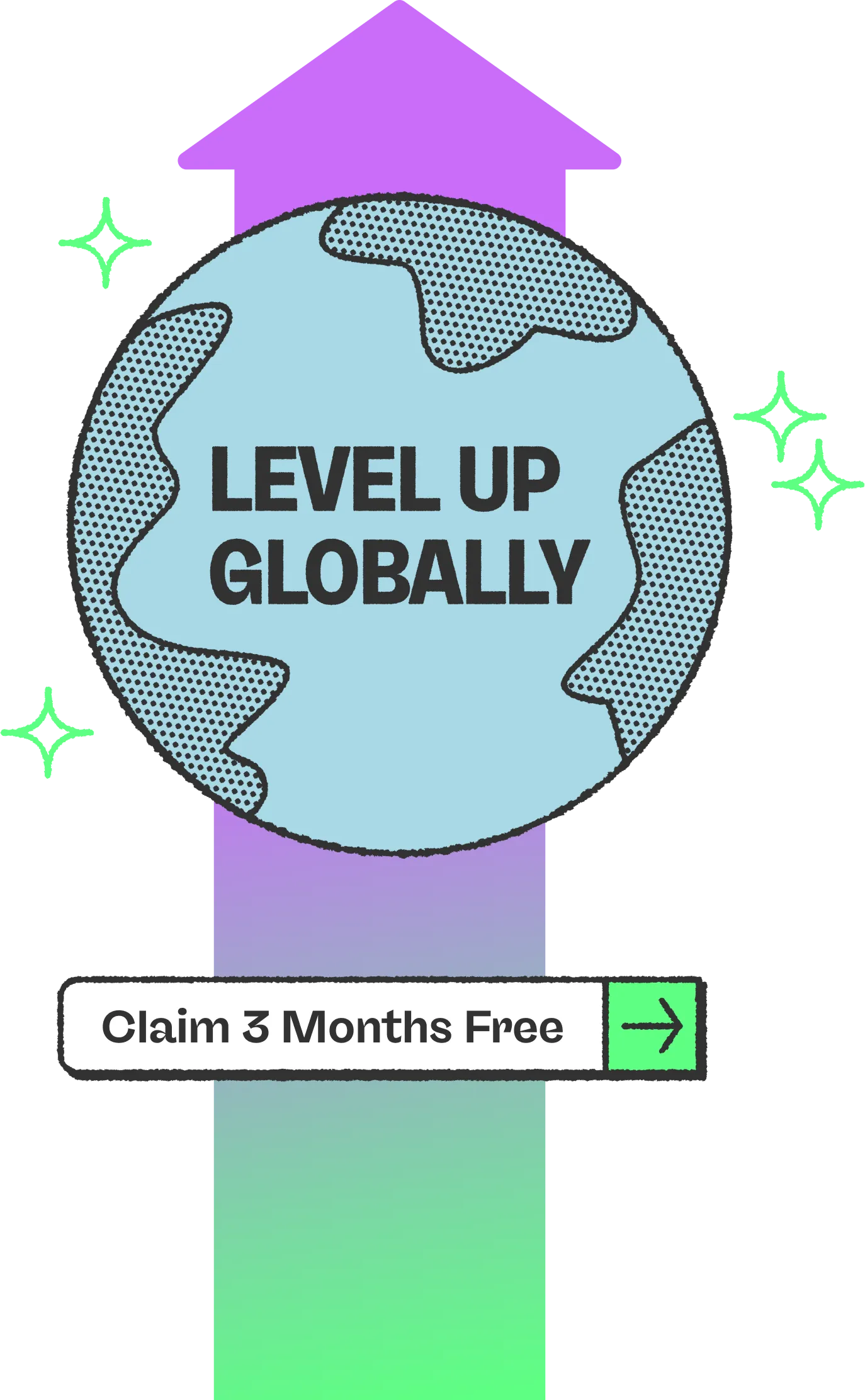A complete guide for employee onboarding

Employee onboarding
The first day of work is pretty standard—a round of welcomes on Slack, finalizing paperwork with HR, and a copy of the employee handbook. But that’s just a small part of the broader onboarding experience, a facet of the hiring process that includes team-building exercises, regular check-ins, and goal-setting to integrate a new hire into the company.
An effective onboarding program is vital to every company’s success. It’s the foundation of the employee-employer relationship, influencing retention and employee engagement.
In this guide, we’ll explore what employee onboarding is, including all the necessary steps to set your new hire up for success.
What is employee onboarding process?
Employee onboarding is a company’s process of introducing new hires to the organization and their role within it. In a nutshell, it’s the part of the hiring process that prepares new team members for their jobs, introduces them to the team, and engages them with the company.
At a bare minimum, onboarding involves a pile of administrative paperwork and the company email one receives on their first day. But proper employee support demands more. To kick off the employee-employer relationship on the right foot, you’ll need careful and consistent coordination between HR, hiring managers, training staff, and leadership.
Why is effective employee onboarding important?
An organization’s onboarding process forms a new employee’s first impression of the organization. Greeting a new hire with a well-defined, reliable onboarding process reflects positively on the company culture and workplace expectations.
When employees have all the tools to hit the ground running, the entire company benefits. Here’s how:
- Boost employee retention: First impressions are vital. Onboarding builds the foundations for the employee-employer relationship. An organized and efficient onboarding experience indicates a company culture that respects new team members’ time and workflow, reaffirming their decision to join the team. The opposite employee experience could set up expectations for poor communication and inefficient work processes, sending them back to the job boards.
- Enhance productivity: A well-designed onboarding process goes beyond a basic job description. It walks a new hire through the what, why, and how. After successful onboarding, employees understand their core responsibilities, the importance of their contributions to the chain, and tools and best practices to maximize efficiency.
- Strengthen team dynamics: Effective onboarding brings everyone together. Team introductions, training sessions with team members, and relationship-building activities help new hires feel supported and connected to larger goals and cultural norms.
The stages of employee onboarding
Each company has unique considerations to address during onboarding, but the process typically follows a standard progression:
1. Preparation
The onboarding process begins before an employee starts their first day. The preparation phase focuses on finalizing administrative tasks to ensure they can get straight to work on their first day. Crucial employee documents regarding company policies, necessary new hire paperwork (like tax forms or NDAs), and introductions to other team members are all delivered during the preboarding phase.
New hires might be wrapping up another job or taking a break to recharge. Either way, concise communication with clear directions will help everyone get off on the right foot.
2. Orientation
The first working week is often dedicated to orientation. New employees meet with managers and team members, finalize new hire paperwork with HR, and learn about the company’s best practices and expectations. This week should also include training, like shadowing coworkers or working directly with a team member in a similar role.
Orientation is the ideal time to begin building interpersonal relationships. Live demos and one-on-one Q&As will cement engagement better than training videos watched alone at a new hire’s desk. For remote onboarding, interactive orientation sessions will help bridge the distance.
3. Integration
Most employees start their regular workflow in week two. During the first month, supervisors should check in regularly to gauge performance, introduce new tasks, and set flexible goals. New hires should continue attending regular check-ins with their direct manager for the first six months.
Employees need time to integrate into a new role and culture. Be proactive about engaging and supporting new hires throughout the process.
4. Engagement
New hires may take up to a year to feel comfortable actively participating in the company. Employers can accelerate this process by rewarding successes and building bridges between coworkers. Regular meet-and-greets, seminars, cross-training, and after-hours activities connect employees to the company and their colleagues, driving engagement, productivity, and employee retention levels in the long run.
How long does it take to onboard a new employee?
There’s no one-size-fits-all onboarding process. Administrative details and basic training (e.g., new hire paperwork, team introductions, and software training) should start when they accept the job and wrap up within the first two weeks. However, onboarding doesn’t stop once your hire sets up their Slack and Google Drive accounts.
It could take up to four to six months for a new employee to fully adapt to their new role, company expectations, and best practices. Likewise, team building takes time. Some people take longer than others to feel comfortable reaching out for help. For the first few months, managers should set benchmarks, remain flexible regarding hiccups, and schedule regular check-ins to work through challenges and provide constructive feedback.
5 essential steps for effective employee onboarding
Whether you’re starting from scratch or revising your onboarding best practices, ensure these 5 processes are part of your onboarding program:
- Invest in HR software: Onboarding is a coordinated effort between various departments. An onboarding tracking software will keep everyone on the same page, facilitating better communication and avoiding missed steps. For example, Oyster’s intuitive automated processes help you grow your team with ease.
- Set deadlines: Every onboarding experience moves at a unique pace. Set deadlines for time-sensitive activities (like finishing new hire paperwork and training sessions) and schedule regular progress meetings between new hires and leadership.
- Introduce the work culture: During the first week, the direct manager and coworkers should walk through company policies and provide insights about company culture. Everyone settles in differently—keep communication channels open so new hires feel comfortable asking questions.
- Provide role clarity: A simple job description won’t contextualize a new hire’s role within the larger structure. Take the time to explain how their work impacts their team and the company’s overall goals. Big-picture thinking helps employees feel involved and responsible, improving their engagement.
- Check in routinely: Regular encouragement and constructive feedback will help new hires get comfortable in their roles. Provide feedback immediately to guide them on the right path. When you see good work or notice an error, address it.
The 5 C’s of new employee onboarding
You’ll need patience, consistency, and flexibility to set up a new hire for success. Set a clear mission starting on day one of orientation to promote engagement that retains long-term employees.
Use these five C’s to build an airtight onboarding checklist:
- Compliance: Federal and state laws dictate rules employers must follow in the United States, including proper handling of confidential information and Fair Labor Standards. An onboarding checklist for HR and employees will streamline the process and save the company from potentially expensive legal trouble.
- Clarification: Employees need support to thrive in their new role, even if they’re seasoned pros. Set clear expectations about company culture, organizational structures, and communication styles. Even if these standards seem evident to you, they may not be apparent to new hires.
- Confidence: New employees need time to gain confidence in their day-to-day roles. Training tools, open lines of communication, and team-building initiatives are their primary sources of support. Schedule regular check-ins to analyze progress and highlight good work when you see it.
- Connections: Employees who feel connected to their coworkers and leadership are more likely to deliver work that bolsters their team’s success. Connections forged through meet-ups, team training, challenges, and even a dedicated casual Slack channel can positively affect everyone’s work.
- Culture: No two workplaces are the same. A company’s history, goals, and management style all contribute to the larger culture. Let new hires shadow a colleague or offer them mentors to provide a clear understanding of the work environment from day one.
Onboarding best practices
Onboarding can make or break a new hire’s relationship with the company. A flexible, ever-evolving onboarding program will guarantee success from their start date.
- Standardize the program: Practice makes perfect. A standardized onboarding program doesn’t just keep everyone involved on the same page; it helps staff improve their contributions to the overall experience.
- Don’t isolate your new hire: Take every opportunity to personalize the process. Every one-on-one and interactive experience brings a new hire closer to the company culture.
- Stay flexible: Your onboarding program isn’t written in stone. Ask for feedback and track relevant metrics to continuously improve the process and provide a better experience.
Take onboarding to the next level with Oyster
Welcoming a new member to the team requires careful planning and execution. A flawless program that engages your new hires from their initial job offer to their first-year roundup will yield healthy, committed employees.
With so many tasks on your onboarding checklist, Oyster provides an answer to simplify and automate your program. Learn more about Oyster and start building your global dream team.

About Oyster
Oyster enables hiring anywhere in the world—with reliable, compliant payroll, and great local benefits and perks.

Related Resources

.avif)









